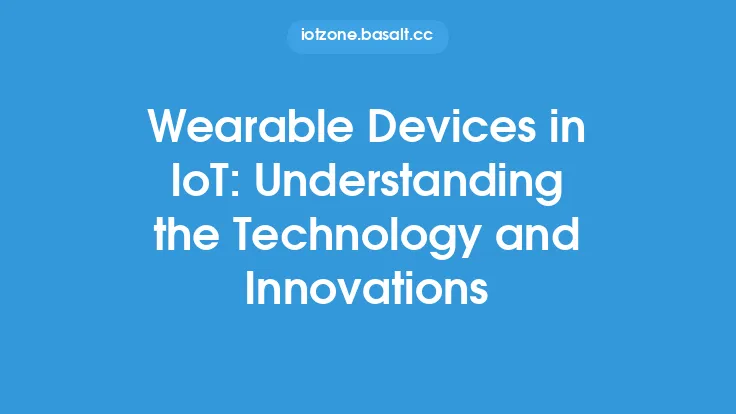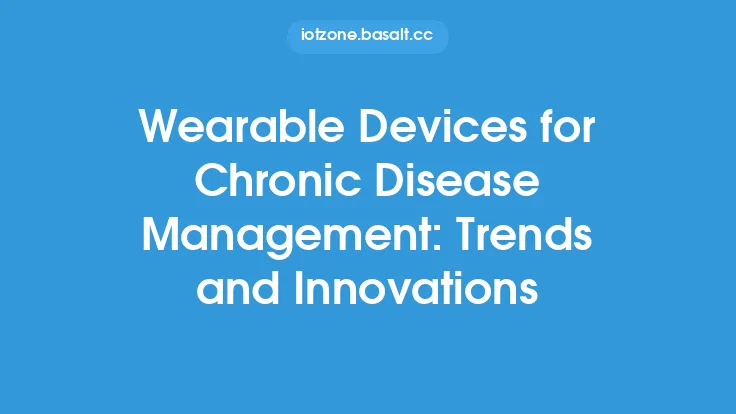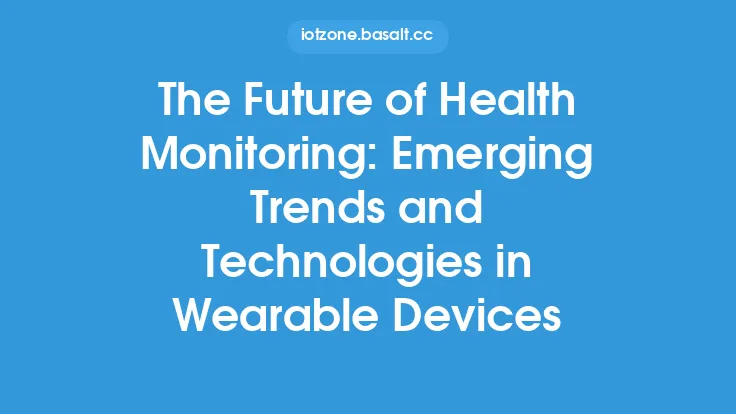The integration of wearable technology in healthcare has revolutionized the way medical professionals monitor and manage patient health. Wearable devices, such as smartwatches, fitness trackers, and smart glasses, have become increasingly popular in recent years, and their applications in healthcare are vast and varied. From tracking vital signs and monitoring chronic conditions to providing personalized feedback and coaching, wearable technology has the potential to transform the healthcare industry.
Introduction to Wearable Technology
Wearable technology refers to electronic devices that are designed to be worn on the body, either as an accessory or as a part of clothing. These devices are equipped with sensors, software, and connectivity capabilities that enable them to collect and transmit data about the wearer's physical activity, vital signs, and other health metrics. Wearable devices can be categorized into several types, including fitness trackers, smartwatches, smart glasses, and wearable sensors. Each type of device has its unique features and applications in healthcare.
Types of Wearable Devices
Fitness trackers are one of the most popular types of wearable devices, and they are designed to track physical activity, such as steps taken, distance traveled, and calories burned. These devices often include additional features, such as heart rate monitoring, sleep tracking, and GPS tracking. Smartwatches, on the other hand, are more advanced devices that can perform a range of tasks, including receiving notifications, controlling music playback, and providing turn-by-turn directions. Smart glasses, such as Google Glass, are wearable devices that display information and provide a virtual interface for interacting with the wearer's environment. Wearable sensors, such as electrocardiogram (ECG) sensors and electromyogram (EMG) sensors, are designed to monitor specific physiological signals and provide detailed information about the wearer's health.
Applications of Wearable Technology in Healthcare
Wearable technology has a wide range of applications in healthcare, from monitoring chronic conditions to providing personalized feedback and coaching. One of the most significant applications of wearable technology is in the management of chronic diseases, such as diabetes, heart disease, and asthma. Wearable devices can be used to track vital signs, such as blood glucose levels, blood pressure, and oxygen saturation, and provide alerts and notifications when abnormal readings are detected. Wearable devices can also be used to monitor physical activity and provide feedback and coaching to help patients achieve their health goals. For example, a wearable device can track a patient's daily step count and provide personalized recommendations for increasing physical activity.
Technical Requirements and Considerations
The development and deployment of wearable technology in healthcare require careful consideration of several technical factors, including data accuracy, security, and interoperability. Wearable devices must be designed to collect and transmit accurate and reliable data, and they must be secure to protect patient confidentiality and prevent data breaches. Interoperability is also a critical consideration, as wearable devices must be able to communicate with other healthcare systems and devices, such as electronic health records (EHRs) and medical devices. Additionally, wearable devices must be designed to meet the needs of diverse patient populations, including older adults and individuals with disabilities.
Challenges and Limitations
Despite the many benefits and applications of wearable technology in healthcare, there are several challenges and limitations that must be addressed. One of the significant challenges is ensuring the accuracy and reliability of the data collected by wearable devices. Wearable devices can be affected by various factors, such as sensor accuracy, signal quality, and user behavior, which can impact the accuracy of the data. Another challenge is ensuring the security and confidentiality of patient data, as wearable devices can be vulnerable to cyber threats and data breaches. Additionally, wearable devices can be expensive, and they may not be accessible to all patients, particularly those in low-income or underserved communities.
Future Directions and Opportunities
The future of wearable technology in healthcare is promising, with several emerging trends and innovations that are expected to transform the industry. One of the most significant trends is the development of artificial intelligence (AI) and machine learning (ML) algorithms that can analyze data from wearable devices and provide personalized insights and recommendations. Another trend is the integration of wearable technology with other healthcare technologies, such as telemedicine and remote health monitoring. The use of wearable devices in clinical trials and research studies is also expected to increase, as they provide a convenient and cost-effective way to collect data and monitor patient outcomes. Additionally, the development of new wearable devices and sensors, such as biosensors and nanosensors, is expected to expand the range of applications and possibilities for wearable technology in healthcare.
Conclusion and Recommendations
In conclusion, wearable technology has the potential to transform the healthcare industry by providing personalized and preventive care. The applications of wearable technology in healthcare are vast and varied, from monitoring chronic conditions to providing personalized feedback and coaching. However, there are several challenges and limitations that must be addressed, including ensuring data accuracy, security, and interoperability. To fully realize the benefits of wearable technology in healthcare, it is essential to address these challenges and limitations and to continue innovating and developing new wearable devices and applications. Healthcare professionals, researchers, and industry leaders must work together to develop and deploy wearable technology that is accurate, reliable, and accessible to all patients. By doing so, we can harness the power of wearable technology to improve patient outcomes, enhance the quality of care, and reduce healthcare costs.





